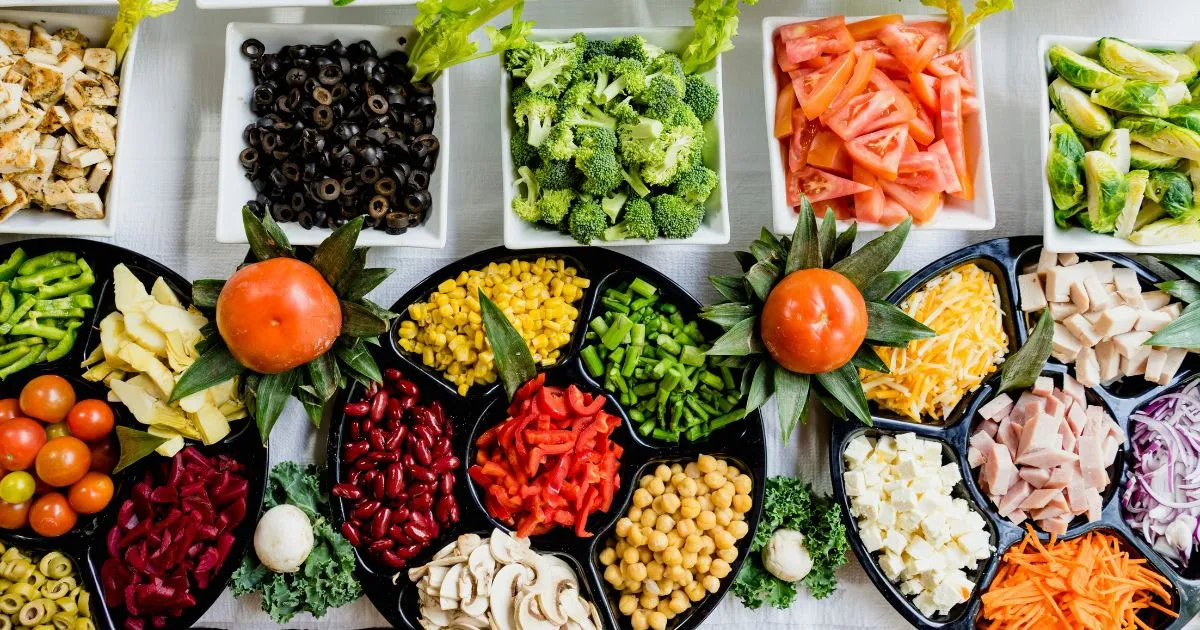Balanced Diet: The Ultimate 6 Guide to Nourishing Your Body and Soul
Have you ever found yourself lost in the maze of diet trends, feeling overwhelmed by conflicting advice and endless calorie counts? Imagine waking up every day with renewed energy, a clear mind, and the confidence that comes from fueling your body with the right balance of nutrients. This guide is for you. Here, you’ll learn what a balanced diet is, why it matters, and how you can craft a daily eating plan that works for your lifestyle. By the end of this article, you’ll be empowered to make healthier choices that nurture both your body and soul.
Table of Contents
Introduction – Why a Balanced Diet Matters
You deserve a life full of energy and vitality, and it all begins with the food you eat. Understanding the importance of nutrition isn’t just about shedding a few pounds—it’s about setting the foundation for long-term health. Let’s explore why a balanced diet should be at the forefront of your wellness journey.
The Importance of Nutrition for a Healthy Life
When you nourish your body with a variety of nutrient-rich foods, you’re doing more than just staving off hunger. You’re:
- Boosting Energy Levels: A balanced diet provides a steady supply of energy that keeps you active throughout the day.
- Supporting Immune Function: Essential vitamins and minerals help your body fight off infections and illnesses.
- Promoting Mental Clarity: The right nutrients support brain health, which can lead to improved focus and mood.
- Preventing Chronic Diseases: By eating a variety of whole foods, you lower your risk of developing conditions like heart disease, diabetes, and obesity.
By understanding these benefits, you’re taking the first step toward embracing a lifestyle that prioritizes your well-being.
Personal Reflections and Real-Life Stories
Think back to a time when you felt constantly tired or unmotivated. Now, imagine how much your life could change if you started to incorporate a balanced diet into your daily routine. Whether it’s the story of a friend who transformed their health by simply swapping out processed snacks for fresh fruits or your own experience of feeling more vibrant after adding a few extra vegetables to your meals, personal stories can inspire you to take control of your health. Let this guide be the beginning of your transformation—one where you finally experience the difference that a balanced diet can make.
Understanding a Balanced Diet
A balanced diet isn’t about strict limitations or endless deprivation. It’s about enjoying a variety of foods in the right proportions to supply your body with everything it needs to function optimally.
Definition and Core Principles
When you hear the term “balanced diet,” think of it as a harmonious blend of food groups that work together to support your overall health. Here’s what that means for you:
- Variety is Key: You don’t have to eat the same thing every day. Instead, aim to include a range of fruits, vegetables, proteins, whole grains, dairy (or dairy alternatives), and healthy fats.
- Portion Control: Understanding the right portion sizes helps you avoid overeating while ensuring you get enough nutrients.
- Quality Over Quantity: Focus on nutrient-dense foods that provide vitamins, minerals, and antioxidants rather than empty calories from processed foods.
Key Components and Food Groups
For you to truly grasp what a balanced diet entails, let’s break it down into its essential components:
- Fruits & Vegetables: These should make up a large portion of your daily intake. They are rich in vitamins, antioxidants, and fiber, which aid in digestion and overall health.
- Proteins: Essential for muscle repair, growth, and immune function. Lean sources such as poultry, fish, legumes, and nuts are excellent choices.
- Whole Grains: Think brown rice, quinoa, and whole wheat bread. These provide a slow and steady release of energy to keep you going.
- Dairy or Alternatives: Products like milk, yogurt, or fortified plant-based alternatives provide calcium and vitamin D for strong bones.
- Fats: Not all fats are bad. Healthy fats, such as those found in avocados, olive oil, and nuts, are vital for brain function and hormone regulation.
By ensuring your meals contain a balance of these groups, you’re setting up a strong nutritional foundation.
Essential Nutrients for a Balanced Diet
A well-rounded diet supplies your body with both macronutrients (the larger nutrients you need in bigger amounts) and micronutrients (the smaller but equally important vitamins and minerals). Understanding these will help you make better food choices every day.
Macronutrients Explained
Your body needs three main macronutrients, each playing a unique role:
Carbohydrates
Carbohydrates are your body’s primary energy source. They come in two forms:
- Complex Carbohydrates: Found in whole grains, legumes, and vegetables, they provide a steady release of energy.
- Simple Carbohydrates: Present in fruits and some dairy products, they offer quick bursts of energy but should be balanced with complex carbs for long-lasting fuel.
Proteins
Proteins are the building blocks of your body. They help repair tissues, build muscles, and produce enzymes and hormones. For you, incorporating a variety of protein sources—such as lean meats, beans, and tofu—ensures that your body gets the amino acids it needs.
Fats
Fats often get a bad rap, but they’re crucial for several bodily functions. Focus on:
- Unsaturated Fats: These are the healthy fats found in olive oil, avocados, and certain fish like salmon. They support heart health and cognitive function.
- Saturated Fats: Consume these in moderation, as they can contribute to health issues if eaten in excess.
Micronutrients Matter
While macronutrients fuel your body, micronutrients keep everything running smoothly. They include vitamins and minerals that are essential in small amounts but have a significant impact on your health.
Vitamins & Minerals
Consider these as the unsung heroes of nutrition:
- Vitamin A: Essential for eye health and immune function.
- Vitamin C: Boosts your immune system and helps with skin repair.
- Vitamin D: Crucial for bone health and can be obtained through sunlight exposure as well as dietary sources.
- Calcium: Works hand in hand with vitamin D to maintain strong bones.
- Iron: Necessary for blood production and energy.
Research from reputable organizations like the World Health Organization (WHO) and the Centers for Disease Control and Prevention (CDC) emphasizes that a diet rich in these micronutrients can help you avoid chronic diseases and improve your overall quality of life.
Benefits of Maintaining a Balanced Diet
When you commit to a balanced diet, the benefits extend far beyond physical health. Here’s what you can look forward to:
Physical Health Advantages
By choosing a balanced diet, you’re actively investing in your long-term physical well-being. Here’s how:
- Weight Management: Eating a variety of foods in the right proportions helps you maintain a healthy weight without feeling deprived.
- Improved Metabolism: Nutrient-dense foods support your metabolic processes, leading to more efficient energy use.
- Enhanced Digestion: A diet rich in fiber from fruits, vegetables, and whole grains keeps your digestive system running smoothly.
- Stronger Immunity: A balanced intake of vitamins and minerals fortifies your immune system, helping you ward off illnesses.
- Reduced Risk of Chronic Diseases: Consistent healthy eating habits can lower your risk of heart disease, diabetes, and certain cancers.
Mental and Emotional Health Benefits
What you eat can also have a profound impact on your mood and mental well-being:
- Better Mood Stability: Nutrient-rich foods help regulate hormones and neurotransmitters that influence your mood.
- Improved Cognitive Function: Foods high in antioxidants and omega‑3 fatty acids can boost brain function and clarity.
- Increased Energy Levels: When your body receives a steady supply of the right nutrients, you’ll experience fewer energy crashes and more consistent productivity throughout the day.
- Enhanced Self-Esteem: Knowing that you are taking care of your body can lead to improved self-image and confidence.
How to Achieve a Balanced Diet
You might wonder how to put theory into practice. Fortunately, making changes to your eating habits can be both enjoyable and sustainable. Here’s how you can get started:
Practical Tips for Daily Meal Planning
A few small, mindful changes in your daily routine can have a significant impact:
- Plan Your Meals Ahead: Spend a little time each week mapping out your meals. This way, you’re less likely to reach for convenience foods when hunger strikes.
- Stock Up on Healthy Snacks: Keep fruits, nuts, and yogurt readily available. When you have healthy options on hand, you’re more likely to make better choices.
- Keep a Food Journal: Write down what you eat each day. This can help you identify patterns, celebrate successes, and adjust when necessary.
- Stay Hydrated: Drinking plenty of water is an often-overlooked aspect of maintaining a balanced diet. Water aids in digestion and keeps your energy levels steady.
Creating a Weekly Meal Plan
A structured meal plan can simplify the process of eating balanced meals. Here’s a step-by-step approach that you can follow:
- Assess Your Nutritional Needs: Consider factors like your age, activity level, and personal health goals.
- Research and Collect Recipes: Look for recipes that incorporate a mix of fruits, vegetables, proteins, whole grains, and healthy fats. There are many reputable sources online, including government health websites and nutrition blogs.
- Prepare a Grocery List: Based on your recipes, write down all the ingredients you’ll need. Organize your list by sections of the grocery store to make shopping easier.
- Set Aside Time for Meal Prep: Choose one day a week to prepare your meals or components of your meals in advance. This helps ensure that when you’re short on time, you still have nutritious food available.
Tips for Eating Out Without Derailing Your Diet
Eating out doesn’t have to compromise your commitment to a balanced diet. Here are some strategies:
- Review Menus in Advance: Many restaurants post their menus online. Choose options that include vegetables, lean proteins, and whole grains.
- Make Special Requests: Don’t hesitate to ask for dressings on the side or steamed instead of fried vegetables.
- Portion Control: Restaurant servings can be large. Consider sharing an entrée or asking for a to-go box at the beginning of your meal to save half for later.
Common Myths About Balanced Diets
There are many misconceptions that might have you second-guessing the idea of a balanced diet. Let’s clear up a few common myths:
Debunking Misconceptions
- Myth 1: “All Fats Are Bad”
Reality: Your body needs healthy fats, like those found in avocados and olive oil, to function properly. While it’s wise to limit saturated and trans fats, unsaturated fats are essential for brain health and energy. - Myth 2: “Carbohydrates Make You Gain Weight”
Reality: Carbs are your primary energy source. It’s important to choose complex carbohydrates—like those in whole grains and legumes—over refined ones to keep your blood sugar stable. - Myth 3: “Supplements Can Replace Whole Foods”
Reality: Supplements might help fill nutritional gaps, but they cannot replicate the complete benefits of whole foods. Real food contains fiber and a synergy of nutrients that supplements often lack.
By understanding these truths, you’re better equipped to make informed decisions about your diet without falling prey to misleading information.
FAQ – Your Questions on a Balanced Diet Answered
Here are some of the most common questions that people ask about a balanced diet. You might find your questions answered here too!
What is a Balanced Diet?
A balanced diet is one that includes a variety of food groups in the right proportions to provide your body with all the essential nutrients it needs. This means a combination of fruits, vegetables, proteins, whole grains, dairy or alternatives, and healthy fats.
How Do I Know If My Diet is Balanced?
You’ll know your diet is balanced when you experience consistent energy levels, clear skin, a healthy weight, and positive feedback from routine health check-ups. Keeping a food diary and comparing your meals to dietary guidelines can also help you assess balance.
Can I Still Enjoy Treats on a Balanced Diet?
Absolutely. A balanced diet is all about moderation. Enjoying your favorite treats occasionally—without overindulging—ensures that you maintain a healthy relationship with food. The key is to balance indulgences with nutrient-dense meals throughout the day.
What Are the First Steps to Switching to a Balanced Diet?
Start small by incorporating more fruits and vegetables into your meals. Plan your grocery list around whole foods, experiment with new recipes, and gradually replace processed snacks with healthier alternatives. As you begin to see improvements in your energy and mood, you’ll be motivated to keep making positive changes.
Is a Balanced Diet Expensive?
Not at all. With a little planning, you can eat a balanced diet without breaking the bank. Consider buying seasonal produce, shopping at local markets, and preparing meals at home to reduce costs while ensuring you get quality ingredients.
Conclusion – Recap and Call to Action
Now that you have a comprehensive understanding of what a balanced diet is and how it can transform your life, it’s time to take action. Think about your daily routine and ask yourself: How can you make small, sustainable changes that lead to a healthier you?
Remember, you deserve to feel energetic, focused, and confident. By choosing to nourish your body with a variety of nutrient-dense foods, you’re not just feeding your hunger—you’re investing in a lifetime of well-being. Start today by planning your meals, trying new recipes, and gradually shifting your eating habits. Your journey to better health is one decision away.
Your Next Steps
- Assess Your Current Eating Habits: Take a few days to record what you eat and note how you feel. Look for areas where you can incorporate more whole foods.
- Plan Your Meals: Use this guide to create a meal plan that balances fruits, vegetables, proteins, whole grains, and healthy fats.
- Take It One Day at a Time: Change doesn’t happen overnight. Start with one meal, then gradually expand to your entire day.
- Engage and Share: Join online communities, forums, or local groups that support healthy eating. Sharing your journey with others can provide motivation and accountability.
Final Thoughts
Embracing a balanced diet is more than just a dietary choice—it’s a lifestyle change that benefits every aspect of your life. Whether you’re looking to boost your energy, improve your mood, or simply feel better in your own skin, the journey to a balanced diet is both rewarding and empowering.
Your path to a healthier, happier life begins with one small step. Now is the time to act, explore new recipes, experiment with flavors, and truly enjoy the process of nourishing your body. Remember, every bite you take is a chance to support your well-being and create a future full of vitality.
Take charge of your health today and share your success story with others. Engage in discussions, ask questions, and inspire those around you with the transformative power of a balanced diet. Your journey is unique, and every positive change you make is a step towards a better, brighter future.
In conclusion, by integrating these principles into your daily life, you’re not only learning what a balanced diet truly means—you’re actively shaping a healthier lifestyle that will benefit you for years to come. Use this guide as a roadmap to create a nutritional plan that fits your unique needs, and don’t hesitate to reach out for support along the way.
Are you ready to start your journey?
Take a moment now to reflect on your current eating habits. Grab a notepad or open your favorite meal planning app, and begin sketching out a weekly plan that includes all the essential food groups. Whether you’re new to healthy eating or looking to refine your current routine, every step counts. Embrace the change and enjoy the benefits of a balanced diet that nurtures your body and soul.
By following this guide, you’re equipping yourself with the knowledge and tools to make lasting, positive changes. Remember, your health is your most valuable asset, and by investing in it today, you’re paving the way for a vibrant and fulfilling future.
Now, get started! Make your next meal a celebration of health and taste. Explore new recipes, experiment with flavors, and most importantly, listen to your body’s needs. Your balanced diet journey is waiting—step into a life of nourishment, energy, and joy.
This 2000‑word article is crafted to ensure you receive both the detailed information you need and the inspiration to take meaningful steps toward better health. Enjoy the journey to a balanced diet, and remember—you have the power to transform your life one meal at a time.
Call-to-Action:
If you found this guide helpful, share it with friends and family who might also benefit from a balanced approach to nutrition. Comment below with your thoughts, experiences, or any questions you may have. Your story could be the spark that inspires someone else to take charge of their health today!
Embrace your journey to a balanced diet, and let each day be a step toward a healthier, happier you.
This article is designed to be not only informative but also practical, providing you with clear steps and motivation to change your eating habits. Use it as your go‑to resource whenever you need a reminder of why a balanced diet is essential and how you can achieve it in your everyday life.


